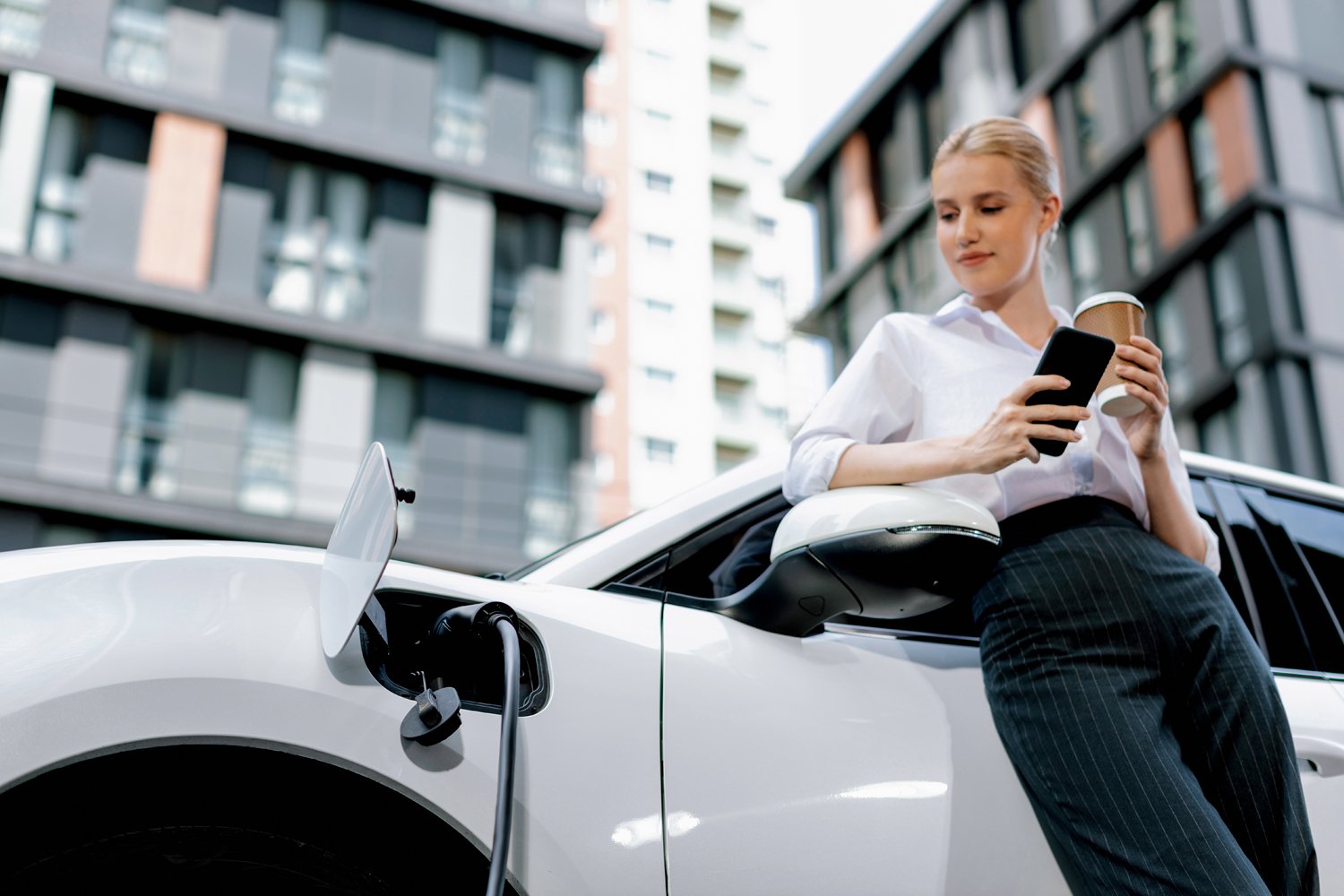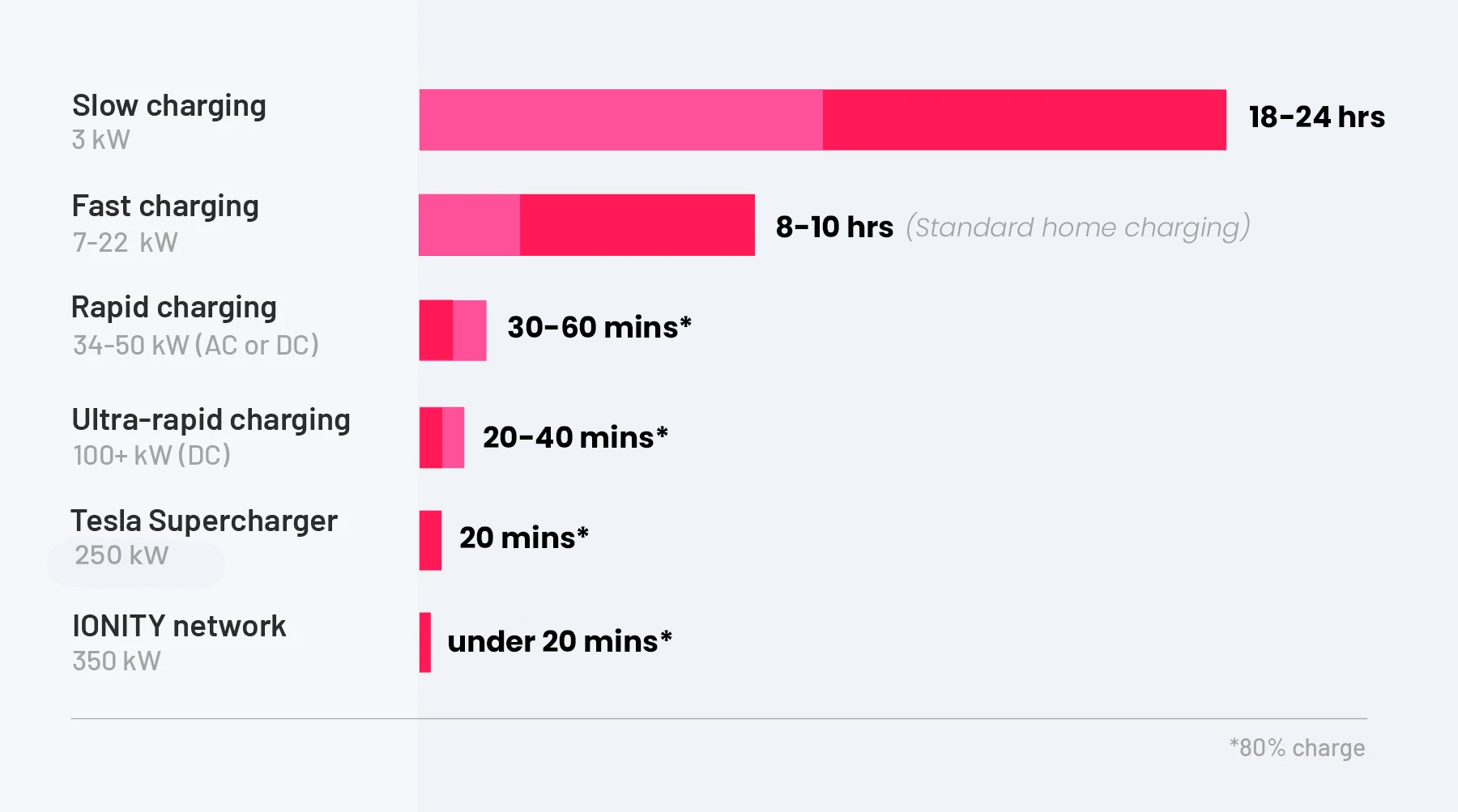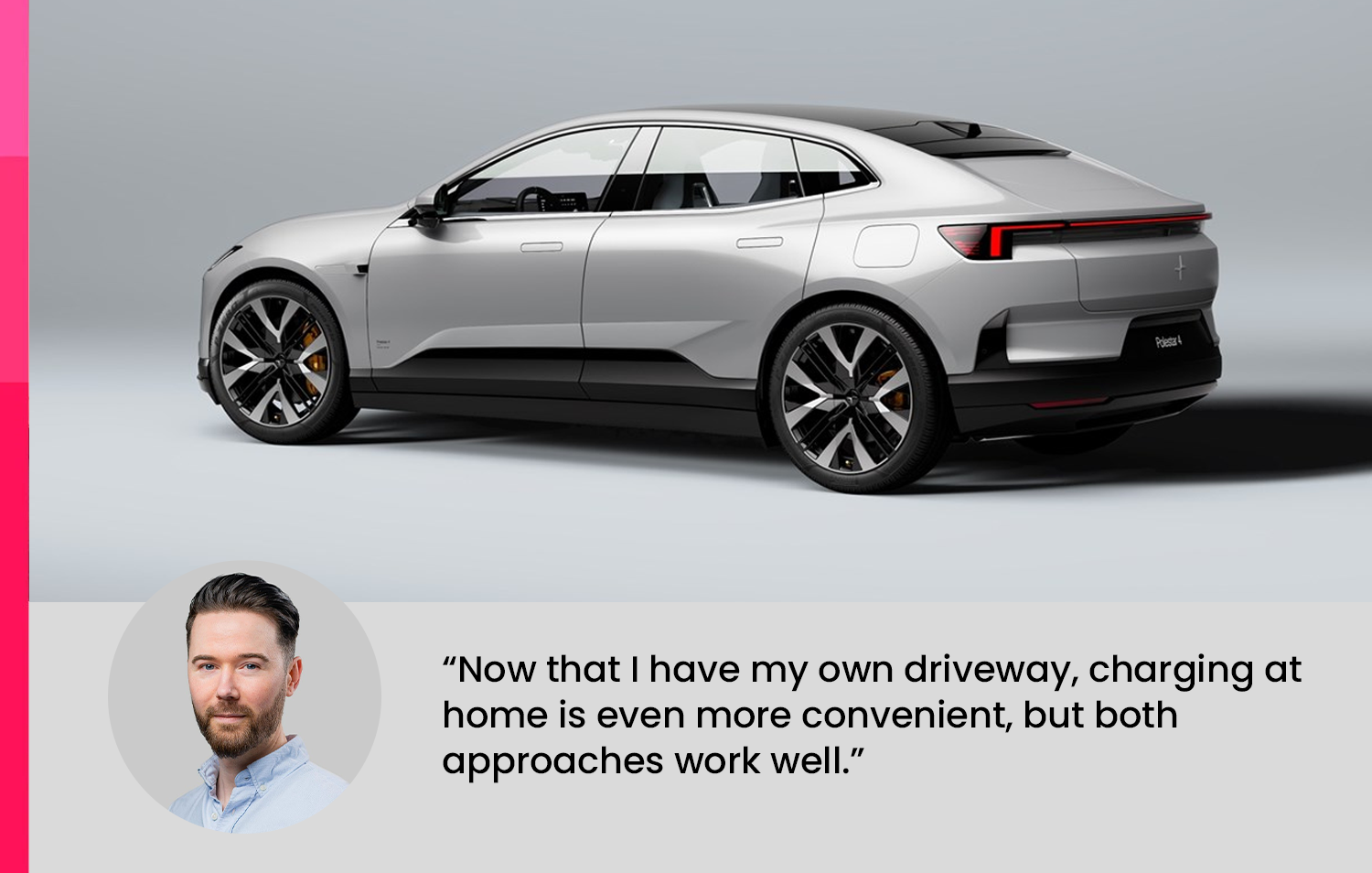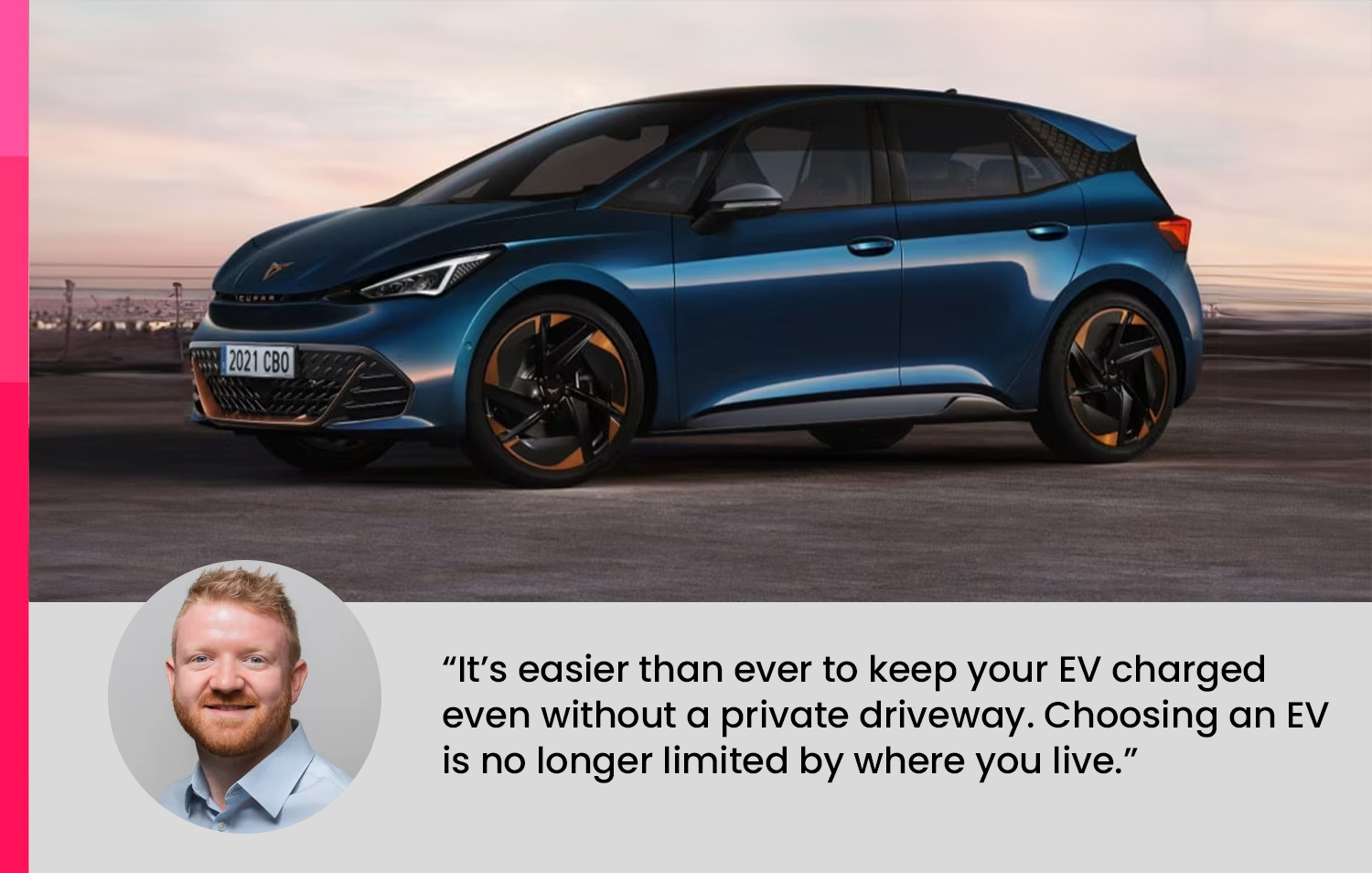S h a r e
Choosing an EV – when you live in a flat


Posted by
The EV Team
January 2026
If you live in an apartment or within a block of flats with shared parking, the thought of choosing an electric vehicle (EV) might seem an impossible prospect.
It’s difficult, certainly, but by no means insurmountable.
In a recent Zap-Map survey of EV users, 79% of respondents had a home charging point installed on a private driveway but about half (51%) of EV drivers use the public network at least once a month.
Many drivers without off-street parking of their own will rely on public points to charge their EV. But there are now a number of innovative ways to fit a home charger – even without a private driveway.
Take, for example, a ‘cable gully’ (also known as a ‘charging gully’), which allows you to run a charging cable safely across a pavement without the risk of it being a trip hazard for pedestrians. This could be one way for you to have a home charger fitted if you live in a ground floor flat.
The Government is certainly focused on making this easier for residential use, by consulting on removing the red tape required to install gully charging under pavements. It will also be easier in the future for those living in flats to mandate the installation of EV chargers in car parking areas designated for residents.
But while that’s still to come fully down the line, there are other ways to get a charger installed if you live in a flat.
Home ChargePoint grants for flats
Where conditions are met, the Office for Zero Emission Vehicles (OZEV) currently offers a grant of up to £350 per point towards the cost of installing chargers at properties such as blocks of flats. To have chargers installed where you live would make life dramatically simpler, so if there is designated parking for your building, it’s worth asking the landlord about it. The grant is also available if you live in a flat which you own.
If you only have on-street parking and you’re renting then support is available too. If you plan to install a cross-pavement solution, such as a charging gully, then OZEV offers a grant of up to £350 towards the cost of installing the EV charging point.
Accessing public chargers
One way to charge away from home, where available, is at work. The car is often left for hours on end without being required, so if you can plug-in there, you simply invert the common charging times – during the day rather than at night.
This is a good option for both pure-electric and plug-in hybrid (PHEV) models, allowing EVs to run without a compromise in heading to public chargers, and PHEV drivers the chance to maximise efficiency by running on electric power as much as possible.
Because of the smaller battery of PHEVs – and therefore shorter charging times – the back-up of having an engine as well could mean a hybrid makes perfect sense for drivers living in flats or apartments, particularly with a reliable workplace charge.
Not everyone has a work charging option though, and with no reliable access to a home EV wallbox, drivers will need to find out about their local public charging infrastructure.
The types of public charger

It should be noted that ultra-rapid chargers are mainly found at motorway service stations, retail locations, and dedicated charging hubs.
Tesla Supercharger points used to be restricted to drivers of Tesla vehicles but the network is gradually being opened up to non-Tesla drivers. It is important to check whether a charging location is available to non-Tesla vehicles before relying on it. You will also need the Tesla app downloaded to your smartphone.
Equally, Ionity only uses CCS connectors for its high-speed charger so those EVs with an older style CHAdeMO socket will not be able to use them. The majority of electric cars capable of rapid charging use the European CCS standard, but it’s important to check your car’s compatibility.
The charging networks
There are a large, and seemingly ever growing, number of public charging providers, with both major nationwide networks such as Osprey, Gridserve, and Instavolt, as well as those focused on on-street charging, like Shell-owned ubitricity, which puts charge points in street furniture such as lamp posts.
All public charge points must allow ad-hoc access, which is usually offered by the use of an app from the network. Downloading it to their smartphone, the driver can then start and stop the charging process, and get billed for the charging session.
Rapid chargers are legislated to allow contactless payment card access, so drivers can tap their bank card like they would do at a supermarket, tapping again to end the session. This means drivers can turn up at a new-to-them network and access a point without any special app or RFID access card.
Charging hubs are springing up across the country, which see a large number of charging points in one location. It allows drivers to rely on being able to turn up and be able to plug-in straight away in most cases, with a dozen or more units available to use. There are hubs at locations like Gridserve’s Braintree “Electric Forecourt”, Instavolt’s Banbury location, Osprey’s hub in Devon, and BP Pulse’s Gigahub at the NEC Birmingham. Hubs tend to be sited close to main through routes, though Shell has replaced a conventional forecourt with a charging hub on the Shell Recharge network, in Fulham in west London, so this is not always the case.
Download a public charging point map such as Zap-Map and you will be able to find chargers from any network in the UK. You could search by switching between different networks’ apps, but by using the filters to keep to those networks you want to use, it’s simpler to find them using a third-party service, and then use the network to use the point where required.
Apps like Zap-Map, as well as WattsUp and Plugshare are all available on both iOS and Android platforms, and are commonly used by any EV driver, both those relying on public points for “home” charging, and those charging on public units occasionally.
What does it cost to use a public EV charger?
Costs can vary greatly depending on the network, and also whether there is a subscription available. All charge points are accessible at a set fee, but some car manufacturers provide a cross-network access card, with usage billed to one account monthly, and with discounted prices on the electricity used with a monthly subscription. If using a particular network regularly, as drivers from flats and apartments may need to do, significant savings could be made by subscribing.
There are some free charge points around, but these are few and far between. Instead, expect a price of around 70p per kW for “fast” public chargers, and about 80p per kW for rapid and ultra-rapid points. However, these prices can change quickly depending on the wholesale price of electricity.
If relying on public charging, it is worth investigating the closest and cheapest points, because a little extra walk from home could see a dramatic reduction in motoring costs.
Does it really work if you live in an apartment complex?
Well, yes it does, as two Fleet Alliance employees can tell you. Marc Murphy, who is in charge of Fleet Alliance’s marketing department, previously lived in an apartment and drove an electric car and Fraser Murray, business development executive, currently lives in a Flat where there is no charging facility. Marc drove a Tesla Model 3 Performance, while Fraser drives a Cupra Born V3.
Find out what they do to keep their cars charged up.
Case studies

Marc Murphy
- Drives a Polestar 4 Dual Motor
- Now driving his 3rd electric car since 2019
- Lived in an apartment, now has a driveway and a home charge point
- Has relied on both on-street charging and at-home charging
Received opinion says that, to drive an EV, you need to have some form of off-street parking so that the car’s battery can be suitably replenished via a home charging unit.
Marc Murphy, though, decided that he was going against received opinion when he took delivery of his first electric car back in 2019. And for three years was gliding silently around in a Tesla Model 3 Performance.
Marc is head of marketing at Fleet Alliance and decided to swap a fuel pump for a battery charger, saying that a combination of new technology and the environmental benefits of running zero-emission vehicles were key to his decision, adding: “It just felt right to be moving in this direction.”
Living in a city apartment in central Glasgow meant Marc had no immediate access to an electric charger. However, the city location actually played into Marc’s hands. He explains:
“Where I lived was in close proximity to a couple of on-street chargers but in addition, I was also only a 10-minute drive to the nearest Tesla Supercharging network. Most of the time I’d been able to access the on-street chargers without a problem.
“In fact charging my Tesla in Scotland was a problem-free experience. I genuinely had zero range anxiety.”
So what advice would Marc give to someone who wanted to go electric but also wanted to continue apartment living?
“I think it’s important to do a little research into the charging infrastructure in your area,” says Marc. “Choosing an electric and living close to a supercharging station is an added benefit, so just make sure you’re choosing an EV with the flexibility and battery range your driving requires. But if there are enough public charging options nearby, I’d highly recommend switching to electric.”
Marc added, “Now that I have my own driveway, charging at home is even more convenient, but both approaches work well. Whether you live in a flat or a house with a driveway, there are practical solutions to make EV ownership easy and stress-free.”
Fraser Murray
- Drives Cupra Born V3
- Recently switched to an EV for the first time
- Lives in a flat
- Uses local charge points
Fraser doesn’t have access to a home charger; he lives in a flat, and while there are adequate on-street parking spaces, there is currently no option for Fraser to install a charge point.
Nevertheless, it really hasn’t detracted from the ownership experience of his Cupra Born. Fraser has made charging up the car part of his weekly regime, utilising nearby public chargers or charging up at Fleet Alliance’s workplace charging network at Glasgow’s Skypark.
He says, “Many people assume that living in a flat makes owning an EV difficult due to charging concerns, but that’s simply not the case. With the growing number of public and workplace charging options, plus innovative solutions from property managers, it’s easier than ever to keep your EV charged even without a private driveway. Choosing an electric vehicle is no longer limited by where you live.”
“I certainly wouldn’t go back to a petrol or diesel.
“There’s no valid reason not to go electric.”


